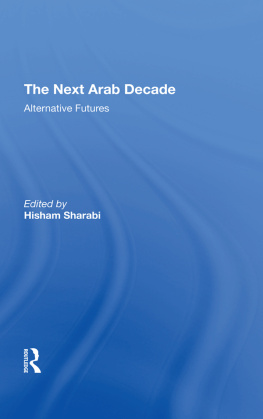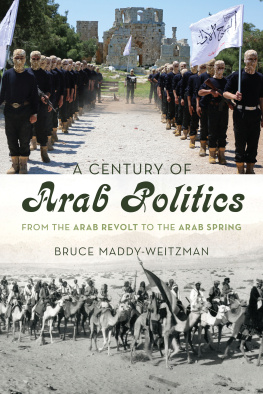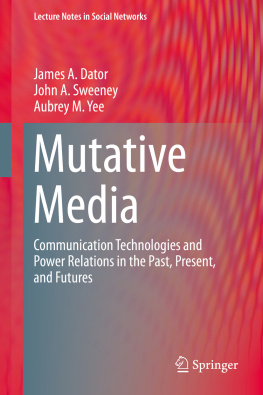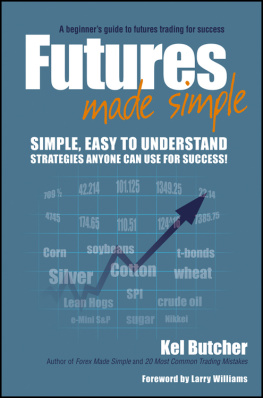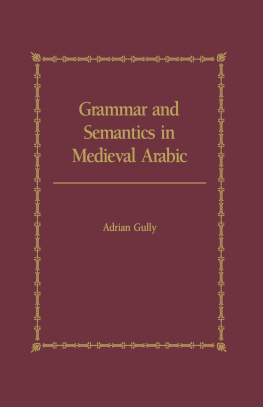The Next Arab Decade
Published in cooperation with the Center for Contemporary Arab Studies, Georgetown University
First published 1988 by Westview Press
Published 2019 by Routledge
52 Vanderbilt Avenue, New York, NY 10017
2 Park Square, Milton Park, Abingdon, Oxon OX14 4RN
Routledge is an imprint of the Taylor & Francis Group, an informa business
Copyright 1988 by the Center for Contemporary Arab Studies, Georgetown University
All rights reserved. No part of this book may be reprinted or reproduced or utilised in any form or by any electronic, mechanical, or other means, now known or hereafter invented, including photocopying and recording, or in any information storage or retrieval system, without permission in writing from the publishers.
Notice:
Product or corporate names may be trademarks or registered trademarks, and are used only for identification and explanation without intent to infringe.
Library of Congress Cataloging-in-Publication Data
The Next Arab decade.
Includes index.
1. Arab countriesForecasting. I. Sharabi,
Hisham, 1927
DS39.N49 1988 303.49174924 87-10674
British Library Cataloguing in Publication Data
The Next Arab decade: alternative futures.
1. Arab countriesSocial conditions
I. Sharabi, Hisham
303.49174927 HN766.A85
ISBN 13: 978-0-367-29445-8 (hbk)
Contents
, Hisham Sharabi
Part One
The State, Democracy, and Human Rights
, Ibrahim Ibrahim
, Michael C. Hudson
, Saad Eddin Ibrahim
Nadia Hijab
Part Two
The Political Economy of Arab International Relations
, Rashid I. Khalidi
, Bahgat Korany
Part Three
The Economy: Breakthrough or Breakdown?
, George T. Abed
Alan Richards
, Michael J. Simpson
Part Four
Cultural Change, Creativity, and Authenticity
, Issa J. Boullata
, Kamal Abu-Deeb
Part Five
Social Transformations
Ismail A. Sirageldin
, Leila Ahmed
, Samih K. Farsoun
Part Six
The Arab-Israeli Conflict
, Joel Beinin
, Naseer H. Aruri
, Anthony H. Cordesman
Part Seven
Priorities for Arab Studies
, John Waterbury
El Sayed Yassin
, Judith E. Tucker
, Elia T. Zureik
In putting together these proceedings of the 1985 annual symposium of the Center for Contemporary Arab Studies at Georgetown University, we have tried to preserve such coherence and continuity as would give this book a unity and focus that are often lacking in collections of conference papers. The central concern of the symposium was the deepening crisis of the Arab worldas seen from the political and economic points of view, in terms of social and cultural life, and from the standpoint of internal and international relations. The questions raised in these papers are primarily concerned with defining the nature of the crisis, with tracing its possible development, and with charting the conditions of its possible outcomes. One central question raised in the panel discussions and many of the papers is, what will the Arab world look like in the mid-1990s, less than ten years from now?
The first panel focused on the question of human and democratic rights, the central and most explosive issue of Arab political life in the coming decade. The subject of the second panel was political economy and international relations; it dealt with inter-Arab relations and superpower relations with the Arab world. The third panel focused on the economyand especially on oil, agriculture, and technology transfer, the most sensitive aspects of Arab economic life. The fourth panel concentrated on the cultural aspects and tackled the problems of creativity and authenticity in their relation to change and modernity. The fifth panel dealt with social transformation, with emphasis on demographic change and the status of women. The discussion of the sixth panel centered on the Arab-Israeli conflict and its impact on regional developments in the next few years. A roundtable discussion of the priorities of Arab studies in terms of methodology and research issues brought the symposium to a close.
All the writers of papers printed here were given the opportunity to revise and update their analyses. Thus, the time lag between the actual date of the symposium and the publication of this book was adequately covered: These papers address the next decade from the vantage of 1986 rather than that of 1985.
This book appeared in an Arabic translation, published in Beirut by the Centre for Arab Unity Studies in early 1987.
Many individuals have contributed to the organization of the symposium and the publication of these proceedings. I should like in particular to thank the members of the Symposium Steering Committee, Halim Barakat, Michael C. Hudson, and Judith Tucker, for the time and effort they put into refining the topics and structuring the program. Special thanks go to Zeina Azzam Seikaly and Michael Baker, without whose diligent and ever-present assistance the symposium and the publication of proceedings would not have been possible. I also wish to express my thanks to Jane Power for a sensitive copyediting of the final text, to John D. Lawrence and Eileen Rogers Orfalea, who served as publications assistants, and to Norma Sharara and Sally Ann Ethelston for an excellent typing of the final draft.
Hisham Sharabi
Introduction:
Patriarchy and Dependency and the Future of Arab Society
Hisham Sharabi
Sitting in a bedouin tent one crisp afternoon last January, I sought to formulate some appropriate thoughts with which to open my remarks. We had just watched color television (a panel discussion from Egyptian television on the interpretation of some obscure religious texts, and an American program with Robert Wagner and Stephanie Powers); and as I sat there trying to frame my thoughts, several cars, including some station wagons and large campers, sped past the tents entrance; in the distance I could see a busy highway, and beyond it a large satellite station. All around the desert was alive with people and cars, with not a bedouin or a camel in sight. This was Kuwaits northern desert, not far from the Iraqi border at the head of the Gulf, where two major oil-producing countries were at that moment doing their best to sink oil tankers carrying their own oil to the world market. In any event, no appropriate thoughts came to me that afternoon.
It was not until a week later, while attending a conference of Arab sociologists in Tunis, that I came upon the appropriate formulation. This was in the form of two theses advanced by the distinguished Egyptian economist Samir Amin, who happened to be a member of the panel I was chairing.
The first thesis held that the age of Arab awakening (nahda) , which in the nineteenth century launched the movement of enlightenment, was now over and a new historical stage was beginning. The second thesis stated that with the end of the age of awakening the leadership of the national bourgeoisie has come to an end with no new leadership to take its place. As Amin put it, the next phase presents a vacuum which religious fundamentalism, being nothing more than a populist movement lacking a strategy and a direction, cannot fill.



